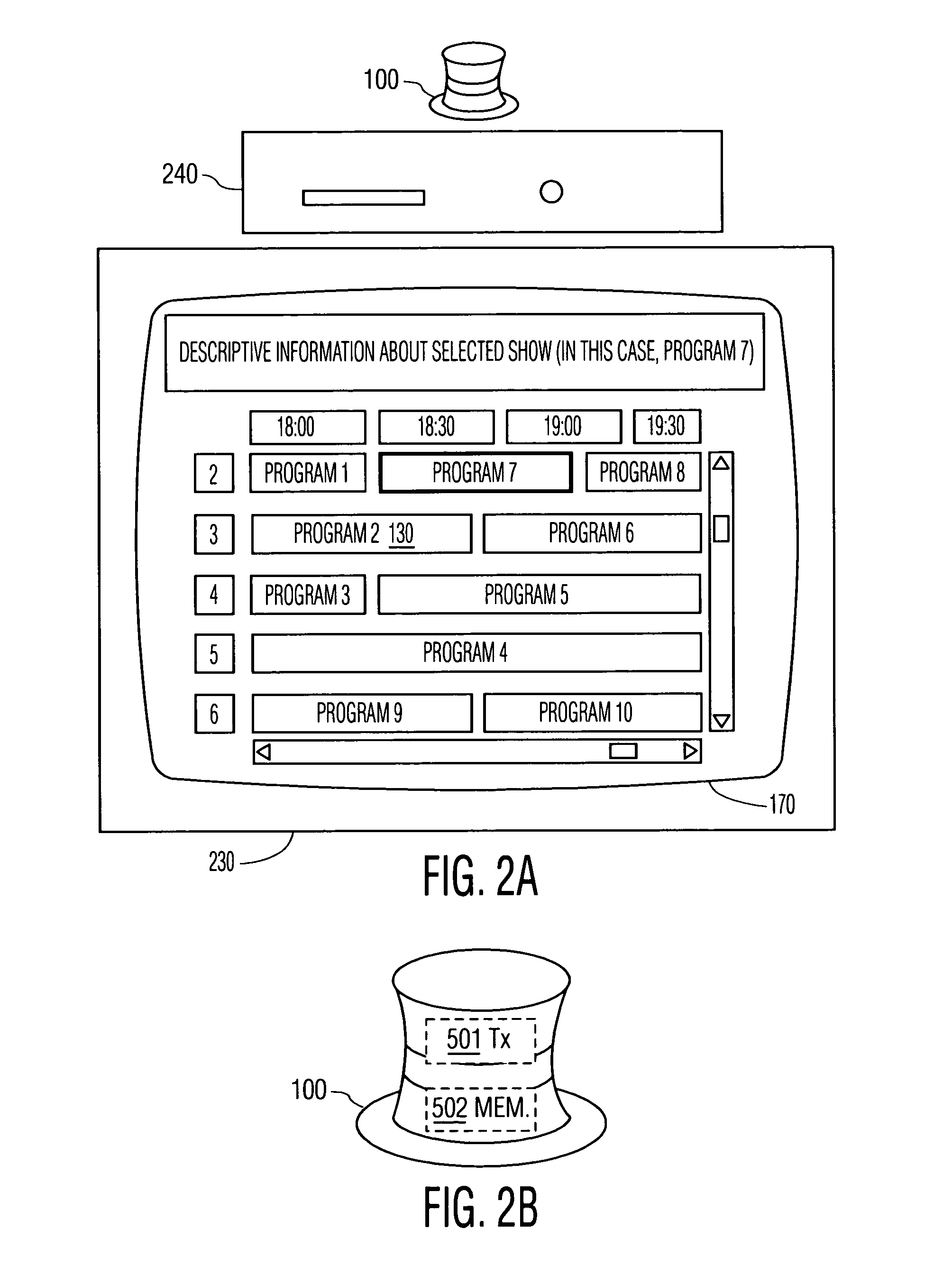[0014]Alternatively, the devices could be required to be placed right near the appliance. In this
scenario, each user would leave his token or device on top of or near the appliance while he / she is expected to remain an active member of a group of users. This would have the
advantage of preventing inadvertent addition of transient occupants of the room being added to the
user group.
[0018]As the constitution of a
user group changes, the appliance may provide information about the combined profile so that the group can make adjustments or reconcile conflicts. Profiles will inevitably contain imperfect information and methods for reconciling them may always be limited to some extent. Thus, for example, the non-presence of sitcoms in one user's profile could indicate indifference or antipathy. The mechanism for reconciling may be limited to simple
logical operations such as union or intersection of sets of rules. Presenting feedback on the combined profile and how it was created could allow the users to create a more intelligent reconciliation. A
user interface to support such an interactive reconciliation may display all the categories of favored material from the various profiles and allow the user(s) to select from among them. For example, in the above case where a
user profile did not contain sitcoms, the group might select that category if the one user was indifferent or might deselect them if the user strongly disfavored that category of material.
[0020]Combining profiles need not be a constant homogenized solution space. It is possible for a
single group, which is planning to watch TV for a period of, say two hours, to compromise in a time-dependent way that maximizes the value for all members. Suppose the combination of profiles suggests highly preferred
programming for one member or subgroup during the first hour and highly valued
programming for another member or subgroup during the second hour. If the appliance knew the time during which the group would use the appliance together, it could make use of that information to allow selections to be made that would segregate the high value selections in time. The result would be that one member would get to see his / her most preferred programming during a first interval while another would get to see his / her most preferred programming during a second interval.
[0021]When a
consumer buys an appliance, multiple RFID devices may be shipped with it. Alternatively, a single device may be shipped with a new appliance and further devices purchased when and if required. If the devices are to be used with multiple types of appliances or even multiple appliances made by multiple manufacturers, there may be a
communications protocol standard that all would adopt. Alternatively, different protocols may be used by different manufacturers and each appliance built to recognize and interact with the devices of other manufacturers. If multiple devices are shipped with a product, to prevent wasted resources in the
relay server, a user is required to register his / her device. The user logs onto the relay
server, authorizes him / herself as a valid user, and enters the profile URL. The user can always change or update this URL, but the resources required for each user is very small so that many users can be serviced with a very small storage space. Also, to minimize contact with the relay
server, appliances can be programmed to persist the profile data or the URL data for a period of time before the data is expired. Preferably this data is never revealed unless via a secure interface, so storage on the appliance should not present a privacy problem.
[0023]As described above, the invention provides, among other things, the ability to “move” profile or
preference data among various appliances. It also provides the ability to associate the profile or
preference data with a physical object rather than something that must be memorized, like a URL. It further provides a simple, fast, convenient mechanism for identifying a user without requiring
data entry through a
user interface. It still further provides the ability for an ad hoc group to be defined and indicated to an appliance and have multiple user profiles merged thereby. Still further, it provides the ability for a manufacturer to provide a key to the supporting
service infrastructure without requiring the manufacturer to support the bulk of the necessary data. The latter feature has the
advantage of permitting devices for making the user's data more secure and private.
 Login to View More
Login to View More  Login to View More
Login to View More 


